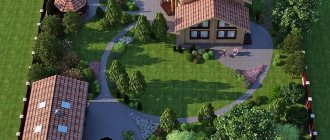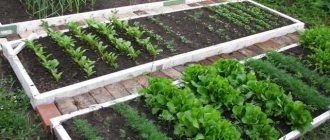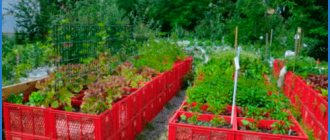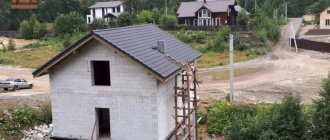The optimal location of the building relative to the cardinal directions makes it much easier to control the temperature in the rooms throughout the year. In addition, proper building orientation helps reduce energy costs.
The house should be planned so that the sun and shadow are allies all year round and at any time of the day. How can this be achieved? Not everyone comes across the perfect plot of land, but on every plot of land you can build the perfect house.
The location of the house on the cardinal points on the site needs to be considered at the site selection stage. The ideal site is on the southern slope of a small hill. The correct location of the premises in the building will help to implement an entrance from the north side. The size of the land plot is of considerable importance. The larger it is, the easier it is to position buildings correctly. An energy-efficient house can be built on a small plot of land, but it is more difficult to plan the optimal location.
The rhythm of the day, the daily habits of the family are very individual characteristics. It is difficult to find uniform rules to which they can be subjected. A universal scheme - a house with a street to the north and a garden to the south - will not suit everyone. In the article, we will refrain from simple formulations and rules, but will describe different options that help facilitate the selection of a plot of land, a finished project, and the choice of the location of rooms.
What should be the width of a bed for strawberries?
The width of the bed is 20 cm, and the furrows between the rows are 40 cm. In this case, the distance between strawberry bushes should be at least 30 cm. Planting plants more densely leads to crushing of the berries. The difference between the level of the bed and the furrow is 25 cm.
Interesting materials:
What is artificial grass used for? Why is a desk audit needed? What is nitroammophoska needed for? What is bee bread used for? Why do you need to try on the product on the customer’s figure? Why are professional ethics needed? Why do you need registration? Why do you need a vent on a coat? What is stamp ink used for? Why is the Comparison Statement needed?
Sun in the living room, shade in the kitchen
When it comes to arranging rooms to ensure the optimal amount of sunlight, the best locations for the most visited rooms are:
- southern,
- southwest side.
How to arrange the rooms?
- The living room in the south, southwest, in which the owners spend the most time, receives natural light, which is most favorable for work, study and relaxation.
- The kitchen does not require so much natural light; it can be located on the north or northeast side, which will also avoid excessive heating of this room.
- For utility rooms - pantries, boiler rooms or laundry rooms, the north side is optimal.
- For an office or bedroom, the most optimal location is east. If one of the family members works at home, then the office located on this side will be filled with sunlight in the morning, which will create ideal conditions for work.
- A bedroom facing the east will ensure that the family will be awakened by sunlight, which improves mood and adds energy. However, not everyone likes to wake up in the morning under the rays of the rising sun. There are people who want or need to sleep longer, and prefer to have their first contact with the sun around noon. For them, the morning sun is undesirable, it irritates the eyes - this is a real torment. But vice versa: it’s not at all difficult to meet people who really love the morning sun’s rays. A good place for a bedroom is the north, especially for those who do not like to wake up in the sun. In this place the sun will not interfere even during daytime sleep.
What to make garden paths from
What to put between the beds to prevent grass from growing:
- wide boards or flooring made of narrow boards, knocked down in one line for strength;
- fiberboard sheets;
- roofing felt;
- mulch from sawdust, hay, grass from the lawn. It is important to remember that fresh sawdust oxidizes the soil;
- an embankment of pebbles, crushed stone, broken bricks - such paths between the beds are very decorative and decorate the landscape;
- old linoleum;
- carton boxes.
Tree cuts
If the location of the plantings does not change and the paths always remain in place, it makes sense to make permanent paths. The most reliable covering between beds against weeds is concrete. Concrete passages can be monolithic, under artificial stone or under tiles.
You can also lay out the paths with tiles and not only concrete. Rubber tiles look very nice; in addition, they do not slip, which makes the summer resident’s movement safe.
Aisles decorated with tree cuts look impressive, but grass will still grow between the cuts if you do not follow the recommendations below.
Capital approach
Layout of a cottage on a slope
The location of the cottage on a slope is not an obstacle to growing garden crops. Sound advice from experts will make this process easier:
- Place the beds across the slope to reduce erosion.
- On a slope with a steepness of up to 50, place vegetable crops in its upper part. Plant shrubs below or make high beds if the soil there is excessively moist.
- On a slope steeper than 5.10, equip terraces on which to place plantings. The recommended ratio of their length and width in this arrangement is 4:1 or 5:1.
- On a slope steeper than 70, make ditches up to 20 cm deep in the middle of the garden and at a distance of 1 m from the edge of the terrace. This will additionally protect the soil from erosion.
Terraced vegetable garden
What should be the ideal length
The ideal recommended length varies greatly among specialists. Thus, the length of the bed according to Mitlaider is 9 m. Domestic gardeners make them smaller, the standard size of the bed is 3 m, sometimes 4.5 m, 6 m.
Focus more attention not on the length, but on ensuring that all the ribbons are the same size, this will greatly simplify the care of crops. However, some amateurs ignore this point, creating entire compositions from plantings of different lengths, thus improving the design of the site.
An original approach to form
Distance to fence
The distance from the house to the border of the site is determined by sanitary conditions. It should not be less than 3 m. It is measured from the wall or base if the porch, canopy, wall or corner bay window, roofing elements or other protruding part extends beyond the perimeter by no more than 0.5 m. If the protrusion is larger, measurements are made along it edge. The barn for poultry, goats and sheep should be placed closer than 4 m from the fence. Other buildings must be located more than 1 m from the fence. With a minimum distance, the standard requires the roof slope to be oriented towards its territory. A minimum distance also exists for plants: for tall trees - 4 m; for medium-sized children - 2 m; for shrubs - 1 m.
Pixabay
There is no classification of trees by height in the standards, however, if the crown of a pine tree blocks the light over a large area, the questions of what type it should be classified as disappear by themselves. Oaks, birches, poplars and other “giants” can hardly be called anything other than tall. Apple trees, pear trees, cherries, dwarf pines and spruce trees are logically classified as medium-sized. With bushes everything is much simpler. However, unresolved disputes often arise among neighbors. An example is a case where a small seedling became the cause of conflict. The judge made the only correct decision - to wait until he grows up and then determine his class according to SNiP.
Natural way to strengthen
If the elevation has an inclination angle of no more than eight degrees, then you can arrange a beautiful flower garden of ground cover plants on the hill. A thick palisade of roots will go to a sufficient depth to strengthen the slope in the summer cottage. Thickets of flowers will perfectly protect the soil from erosion and will prevent it from being washed away even by heavy rains.
The choice of ground cover flora is quite large:
- Periwinkle.
- Sunflower.
- Ivy.
- Woolly moth.
You need to choose one type. Well, maximum two. Otherwise, a bright kaleidoscope will bring disharmony. But a floral carpet looks best as a backdrop for flowering trees and shrubs. Larger roots go deeper and wider. If you plant several small trees on a slope and place shrubs between them, you will not be afraid of landslides.
Large and medium-sized plants to strengthen the slope:
- Climbing rose and wild rose.
- Juniper and lilac.
- Hawthorn and blackberry.
- Japanese quince and viburnum.
- Elderberry and sea buckthorn.
But an ornamental garden on a slope has one serious problem. Rain alone is not enough to irrigate it. The water will very quickly leave the top layer and flow down. Therefore, it will be necessary to organize additional and regular watering.
Alpine lawn on a slope Source na-dache.pro
See also: Catalog of companies that specialize in designing and performing landscape work of any complexity
Rules and features of planning
A serious approach to growing vegetables requires a little preparation and proper planning of the beds in the garden and their location.
- Prepare a separate notebook where you will write down how to distribute the beds on the site.
- Write down the plan of the dacha in your notebook and mark the location of the beds on it.
- Number the ridges.
- On a blank sheet of paper, write down the year of sowing and the numbering of the islands with the crops that you will grow.
Such a notebook and diagram will serve for many years, preserving important information for the gardener. It helps to navigate between crops, adhere to planting shifts and correctly select neighboring plants, which is extremely important even for a small area. After all, failure to observe crop rotation of vegetables and ignoring their compatibility threatens soil depletion and a significant reduction in yield.
For the convenience of sowing shifts, conditionally divide the territory into four zones where you will grow crops with different requirements for soil nutrition, as well as perennials.
- Very demanding - cabbage, cucumbers, pumpkin, potatoes, garlic.
- Moderately demanding - onions, carrots, beets, lettuce, spinach, kohlrabi, radishes, peppers, potatoes, melon.
- Undemanding - the legume family.
- Perennials - strawberries, wild strawberries, rhubarb, perennial herbs.
Proper layout makes crop rotation easier
When adding a garden diagram to your plan, do not forget to note the location of the compost heap. If you don't want to spoil the appearance of your landscape, install a composter. The remains of plants and other organic matter piled here are processed better than in a regular pile. To enhance the effect of rotting, use special bacteriological additives.
Consideration of environmental conditions
The placement of a building relative to the cardinal directions has a direct impact on the interior microclimate and the well-being of residents. Lack and excess of sunlight can be depressing and irritating. An unfavorable location of windows leads to cooling and overheating of the room. An improperly installed house will be exposed to hypothermia by frequent winds, and its walls may be constantly damp from rain blown away by strong winds. These consequences must be taken into account when choosing a land plot or project.
Thanks to technological progress, the influence of the location of the house on the interior is much less than it was in the past. Today, houses are quite airtight, insulated, and it is easier to neutralize the influence of the sun and wind. Modern architecture allows for various bold and interesting solutions that compensate for the consequences of an unfortunate location of the house. To minimize or increase the amount of incoming sunlight, you can find:
- various types of lighting,
- sun curtain rods,
- other simple devices.
Although modern building materials allow greater freedom in planning, it is advisable to put extra effort into choosing the right site. The “right” choice should take into account the location relative to the cardinal directions and the size of the plot, then planning the location of the building is not difficult.
Size, orientation, shape of the site, where to make the entrance?
The larger the plot, the more opportunities there are for implementing various ideas, the more space for maneuver, and the easier it is to position the house correctly. Especially if it is built on the basis of a finished project. On a spacious plot, if necessary, you can easily move the building deeper, or install it at an angle to the street so that the interior “follows” the sun.
If the house takes up 1/4 of the total area of the estate, we have a great chance of ensuring its correct orientation in relation to the cardinal directions, regardless of the configuration.
The smaller the land plot (for example, less than 700-800 m²), the fewer opportunities, the more difficult it is to maneuver the house and premises. The installation of the building comes down to the implementation of the scheme “garage and entrance from the street, premises, residential buildings from the garden.” At the same time, the location of the site becomes especially important, so the demand for sites with entrance and entry from the north or northeast is always high.
It is also important to take into account the shape of the plot; the more it approaches a square, the better. On a square plan it is much easier to correctly position buildings, as opposed to a long and narrow one.
Plants
Particular attention should be paid to large trees, young plantings of vigorous species that will become large in the future. For example, a mighty oak on the south side will absorb almost all the sun's rays in the summer, it will help fight the heat and create a picturesque view from the windows. In winter, when the leaves have fallen, it will allow the sun to warm the rooms, and also provide access to natural light, which is in short supply at this time.
A neighbor's trees on the other side of the road can also have a significant impact. Especially those that grow in the west or south, as they provide long shadows. Trees growing along the northern border of the site will provide strong shading, so it is worth planting low-growing species there that decorate the area but do not shade the building.
Buildings on neighboring territory
When choosing a site for a future home, you should also take into account the neighboring buildings, as they can shade the area even more than a tree. It is important to take into account both existing development and potential development that may appear in the neighborhood. When predicting the development of empty neighboring estates, it is worth taking into account the least profitable option, which will allow you to avoid problems in advance.
For example, even if there is nothing to indicate this, it is better to assume that sometime from the south, at a distance of about 4 m, a dark wall of a neighboring house will appear, which will cast a shadow on the most attractive part of our garden.
The future neighbor will probably try, if possible, to bring his house closer to our border by building up the least attractive northern part.
Thus, when planning your dream home, it is worth considering not only its appearance and interior functionality, but also factors that affect its energy efficiency and comfort. One of them is the correct location of the building. By following a few rules, we can enjoy comfortable housing and lower energy bills.
Neighborhood Rules
Planning a garden in a small area will help to compactly place plants and get a high yield. If you choose the right neighbors in the garden bed in landscape design, then joint cultivation will be beneficial. Successful companions are able to minimize damage from pests and insects.
Bush beans repel Colorado beetles from eggplants and flea beetles from cabbage. It is better to place beans around beds with cucumbers, potatoes and corn. Small islands of weaving crops improve the nitrogen supply of the garden. Peas are the perfect companion for carrots and turnips. The taste of the wormwood and marigold family spoils the taste.
Correct layout of the vegetable garden Source www.benimmulku.com/view.htm
Potatoes are safe to grow in mixed beds. Horseradish, tansy and nasturtium repel insects. The combination with spinach and beans drives away Colorado potato beetles. Celery inhibits root growth and is therefore prohibited for joint cultivation.
Parsley between rows of strawberries will repel slugs. Garden berries in the garden harmoniously coexist with all vegetables. Sage and borage improve the taste of the harvest. Garlic gets along without problems in a garden bed with strawberries, but will not survive next to grapes. Peas are recommended for turnips, but mustard and knotweed are prohibited. Tomatoes may die near kohlrabi.
Table of successful neighbors in garden beds Source eda-land.ru
Corn is very demanding of its surroundings and will not tolerate all types. Beets and celery are also contraindicated. At home, in Latin America, the plant is grown together with pumpkin and beans. Companions support each other throughout the entire development period. Pepper gets along perfectly with basil, but will die in alliance with fennel.
Neighbors in the garden Source www.pinterest.com
Artificial methods
Let's consider how to strengthen a slope on a summer cottage, which has a steeper angle of inclination. Plants alone will not help here. And we will have to take comprehensive measures. And you need to start with drainage.
It is necessary to protect the slope from rain flows. They are the ones that cause sluggish soil sliding. The fertile layer is usually located on a clay lens and the water helps it slide down very slowly. And the thicker the layer and the steeper the slope, the stronger the movement. Especially if the fertile soil is well diluted with sand.
Geo- and biomats
The simplest strengthening of slopes and slopes with a large angle of inclination can be done using a special coating. Both materials resemble a washcloth in appearance. Geomats are made of polypropylene meshes, which are superimposed on each other and connected thermally. Used on slopes with a slope of up to 70 degrees.
Biomats are a cellulose layer on which either straw or coconut fibers are fixed. Suitable for slopes up to 45 degrees. The mats are laid out on the compacted surface of the slope and secured at the top and bottom. To do this, ditches are dug and the edges of the canvases are fixed in them with crushed stone.
Geomats for strengthening the slope Source edilportale.com
Either grass or low-growing flowers are planted on top of the mats. Plants quickly take root, and their roots bind the canvas to the soil. The result is a kind of soil reinforcement. And now the top layer can easily withstand not only rain flows, but even small seismic shocks.
The advantages of mats are:
- environmental friendliness;
- UV resistance;
- stability under temperature changes;
- survivability in an aggressive environment.
Arrangement of a recreation area
The arrangement of the recreation area begins last. Its size, decor, list of structures depend on the purpose of the land:
- a family vacation spot where the maximum amount of space is allocated to a green landscape with decorative plantings, flower beds, alpine slides, mixborders, sports and other facilities: sandboxes, dollhouse, swings, gazebos, gymnastic walls, a swimming pool, a pond with fish and aquatic plants,
- a place of permanent residence for a family with the provision of all household amenities, a greenhouse, a winter garden or greenhouse, receiving guests,
- an ordinary dacha with a living area in the form of a country house, a garage and some other buildings. The main area of such a dacha is allocated for a vegetable garden area intended for growing environmentally friendly and anti-allergenic products used fresh and for winter preparations. In this case, the recreation area is limited to a place for preparing exotic dishes (kebabs, barbecue) in the open air, a gazebo, and a flower garden.
After arrangement of all planned zones, regardless of the purpose of the land plot, it is necessary to equip working paths, on the sides of which there are narrow ribbons of flower beds or shrubs that do not lose their decorative appearance after cutting. Decorate the entire area with ornamental plants located in different parts of the land.
When purchasing a previously developed site, the same zones are laid out on the plan diagrams and a thorough inventory of construction and living plantings is carried out in situ. Each zone is accompanied by a list of works, including the reconstruction of the personal territory. At the same time, old, diseased fruit trees must be cut down.
To make the stumps collapse faster, drill several holes in the stump, fill them with ammonium nitrate and cover them with material that allows water to pass through. Ammonia fertilizer corrodes the wood in a short time and the remains of the stump are easy to free from the ground. If the stump remains in a recreation area or on a lawn near a pond, you can cut out the middle (to form a bowl), fill it with soil and plant flowering plants. Inconveniently located berry bushes are transplanted to a new location instead of being cut down. When developing a site, planting ornamental shrubs, trees, and group plantings that give a unique personality to the landowner is planted last.
What you need to know about watering?
If you plan to water the beds with water from a centralized water supply, you must first check its chemical composition. “Heavy” water filled with hardness salts is no good - it must be left in a barrel, an old bathtub or another accessible reservoir for at least 12 hours, and at the same time it will warm up in the sun. You cannot water plants with ice water.
Soft rainwater is beneficial for fruits and vegetables, containers for which can easily be installed in different parts of the dacha or near the house under a drainpipe. To make watering easier, water collectors are equipped with hand pumps and hoses are stretched along the beds. Rubber hoses bend and quickly break; it is better to purchase reinforced ones.
The most convenient methods are drip irrigation or automatic irrigation. Light polypropylene pipes are laid along the rows, and water is supplied to each plant - in the first case it is poured under the root, in the second it is sprayed under pressure.
Setting up a watering system for garden beds will cost approximately 35-40 thousand rubles per acre, while the most modern designs have remote control - you don’t have to go to the dacha to water the garden.
Expanding opportunities when changing VRI
If the owner of a garden plot wants to build a full-fledged residential building and register it, then it is necessary to change the VRI of the plot.
Without registration of ownership of a residential building, the property is considered unprotected from attacks by third parties.
In addition, neighbors can write a complaint to the authorized body about the construction of unauthorized buildings or misuse of the site.
The owner will be issued heavy administrative fines in accordance with Art. 8.8 Code of Administrative Offenses of the Russian Federation.
For land plots where several VRI are provided, the owner has the right to apply any of them without additional approvals. In other cases, to change the permitted use, you must contact the local administration.
After submitting the application and the required package of documents, a special commission conducts public hearings. Based on the results of the meeting, recommendations are prepared on whether to approve or refuse the application. The final decision is made by the head of the local administration.
Practice shows that local authorities are interested in developing territories and increasing the cadastral value of land. Therefore, in the absence of acute conflicts of interest, applications for changing the VRI, taking into account the zoning of territories, are satisfied.
Briefly about the main thing
The easiest way to protect the slope from destruction is in a natural way. To do this, its entire surface is planted with plants. From ground cover flowers to shrubs and ornamental trees. If the slope angle does not exceed 8-10 degrees, then this will be enough.
Steep slopes must be additionally strengthened before planting either with geomats or geogrid. And if you want to use the hill for a vegetable garden, then you can’t do without arranging terraces. The method will be labor-intensive, but the result will fully justify itself, both practically and aesthetically.
RED BUILDING LINE
The red development line is the boundary between a privately owned site and a public area - roads, pipelines, high-voltage transmission lines.
The normalized setback of the house depends on the type of separation object with a red line. Thus, when the site is located along a highway or main street, the setback of the house from the red line is at least 6 m, when located on secondary streets and alleys - 3 m. Fencing of personal plots cannot protrude beyond the red line of the streets.
What is the red line when building a house?
When building a new home and designing, linking the project with the red lines is an integral part of the work. As a rule, they are indicated in detailed plans for settlements and are stored in local architectural authorities.
Red line in construction
Information about red building lines is needed in the following cases:
- construction of a new house;
- inventory of lands and buildings located on them;
- land surveying;
- creation of construction projects
- registration of the house as personal property.
How to arrange a house according to Feng Shui?
The appropriate location of a house on a site in accordance with the philosophy of Feng Shui begins with a clear definition of the cardinal directions.
Feng Shui layout of the house and rooms
Feng Shui recommends the following:
- the house is placed as close as possible to the center of the available space;
- a very favorable place - on a mountain, any flat hill, its southern slope;
- in an elongated area, the building is placed along the long side;
- common rooms are not located in the western part of the home;
- bedrooms are arranged in the southeast;
- the kitchen is made in the northern part;
- behind the house, but not close to it, a large tree is planted;
- a building located on a plain is surrounded by bushes;
- It is not advisable to build housing near water, especially standing water, as well as in places near sharp bends of rivers;
- The most favorable areas for building a house are square, round, trapezoidal areas;
- construction on a triangular, T-shaped, cruciform area will not bring happiness to the residents;
- It is considered a good sign if the area to the right of the house is slightly lower than the area to the left;
- large mirrors and glass surfaces are extremely undesirable, as they reflect positive energy.
It makes sense to strictly follow all the rules of Feng Shui if a person is going to constantly live adhering to this philosophy. Then the location of every, even the smallest element in a residential area matters.
Building a house according to Feng Shui involves a certain sequence of thoughtful actions
Design of the site fence
Construction and gardening work is being carried out in the designated areas. Drainage, water supply and sewerage communications have been completed. After large building materials (floors, etc.) have been delivered and placed, the construction of the fence can begin. It is better to build the front part of the fence from the entrance to the yard last.
Along the perimeter of the site, you can build a permanent fence made of stone and other building materials and cover it with decorative shrubs. You can plant a hedge of decorative deciduous and decorative flowering tall shrubs (barberry, deutzia, sea buckthorn and other crops) around the perimeter. The thorny intertwining shoots will not only serve as a decorative decoration for the area, but will also protect against the penetration of uninvited guests. The entrance area to the site is one of the last to be registered. It consists of a gate and a concrete platform, decorated on the sides with small architectural forms, lamps, decorative ridges, and arches.
Install a fence











